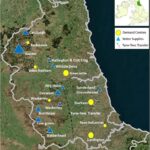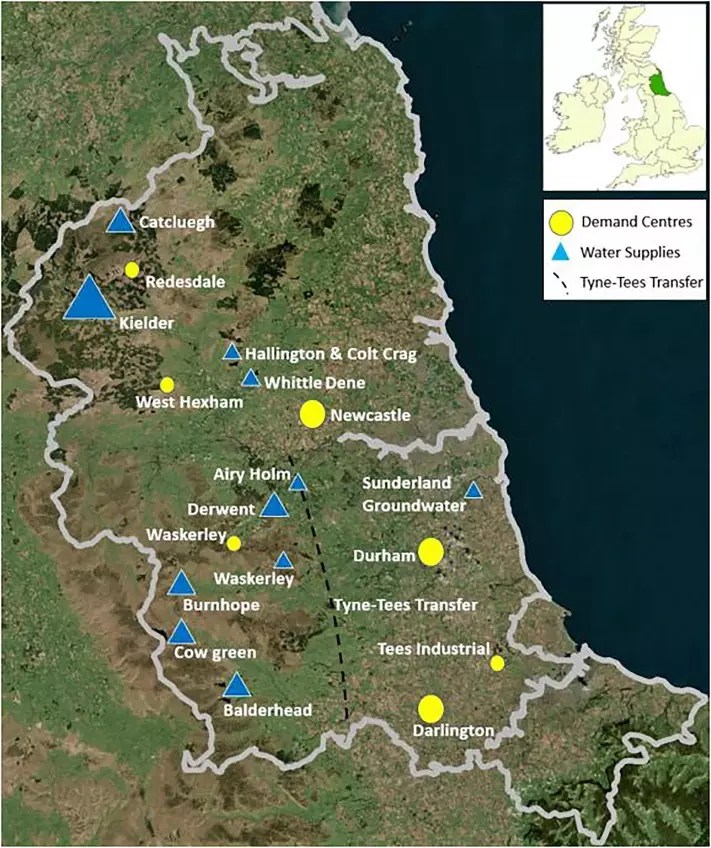Introduction: Why MRSA resistance is important
Imagine a battlefield where humans deploy their most powerful weapons and the enemy not only survives but learns to deflect every attack. That battlefield is modern medicine, the weapons are antibiotics and the enemy is Staphylococcus aureus — in particular its methicillin-resistant form, MRSA.
MRSA is one of the most notorious “superbugs.” First recognized in the 1960s, it quickly developed resistance to methicillin and has continued to adapt at an alarming rate ever since. Today, MRSA resists many first-line antibiotics, including some of the newer drugs that we hoped would overcome it.
For students of microbiology, MRSA offers more than just a warning: it is a perfect case study in how bacteria evolve under selective pressure, how resistance genes spread, and how human practices fuel antimicrobial resistance (AMR). Understanding their mechanisms gives us the keys to designing better treatments, improving antibiotic delivery, and anticipating the next steps in this microbial arms race.
The complexity of antimicrobial resistance
Antibiotic resistance may seem simple: the drug meets the insect, the insect mutates, and the drug stops working. But the reality is much more complex. The development of resistance in MRSA is influenced by three main factors:
- Genetic makeup – The MRSA genome is highly adaptable and full of mobile genetic elements such as plasmids and transposons that mix resistance genes.
- Environmental conditions – Biofilms, nutrient levels and host immune pressure determine the evolution of MRSA.
- Use and misuse of antibiotics – Unnecessary prescriptions, poor diagnoses, counterfeit medicines and even antibiotics in agriculture accelerate resistance.
This complexity explains why MRSA not only resists older drugs such as penicillin and methicillin, but also newer antibiotics that were once considered “last resorts,” such as linezolid, daptomycin, and ceftaroline.
Essentially, MRSA employs three broad strategies to resist antibiotics:
- Modify the objective of the drug. (so the drug no longer binds effectively).
- Destroy or alter the drug. (through enzymes such as β-lactamases).
- Pump the dope (using efflux systems).
Let’s review these strategies, antibiotic class by antibiotic class, to see how MRSA continues to win.
- Main classes of antibiotics and mechanisms of resistance to MRSA
3.1 MLSB antibiotics (macrolides, lincosamides, streptogramin B)
drugs like erythromycin, clindamycinand streptogramin B It blocks protein synthesis by binding to the 50S ribosomal subunit. MRSA gets around this by modifying the binding site itself.
- Key mechanism: he genes emmm They encode methyltransferases that methylate adenine (A2058) in the 23S rRNA, preventing the binding of antibiotics.
- This methylation not only blocks a drug: it creates cross resistance to the three classes of antibiotics.
For students: think of the ribosome as a manufacturing machine and the antibiotic as a wrench trying to lock its gears. MRSA simply alters the gears so that the key no longer fits.
3.2 Glycopeptides (Vancomycin and Derivatives)
vancomycin became the gold standard drug for MRSA in the 1980s. It blocks cell wall synthesis by binding to D-Wing-D-Wing motifs in peptidoglycan precursors. But MRSA found a solution.
- Operons VanA and VanB replace D-Ala-D-Ala with D-Ala-D-Lacreducing the binding affinity of vancomycin by 1,000 times.
- He VanA operon is particularly notable, as it encodes a whole team of enzymes (VanH, VanA, VanX, etc.) that remodel the cell wall.
Clinically this resulted in:
- VISA (Vancomycin-Intermediate S. aureus): Thicker cell walls trap vancomycin.
- VRSA (vancomycin-resistant S. aureus): total resistance through the VanA operon.
- hVISA – heterogeneous populations with subgroups showing intermediate resistance.
New derivatives such as Telavancin add additional tricks: binding lipid II and depolarizing membranes. However, VanA can even undermine telavancin.
3.3 Fusidic acid
This less famous antibiotic blocks elongation factor G (EF-G)stopping the movement of ribosomes during translation. MRSA resistance through:
- Mutations in the fusa gene (that alters EF-G).
- Acquisition of FusB/C proteins which protect EF-G and help it dislodge stuck ribosomes.
This is a fascinating case where MRSA doesn’t destroy the drug: it simply protects its machinery.
3.4 Mupirocin
Best known for nasal decolonization of MRSA carriers, mupirocin inhibits isoleucyl-tRNA synthetase (IleRS). Resistance develops on two levels:
- Low level: point mutations in IleRS reduce drug binding.
- High level: transmitted by plasmid mupA The gene encodes an alternative IleRS enzyme.
In hospitals, overuse of mupirocin has led to worrying levels of resistance, threatening infection control programs.
3.5 Lipopeptides (daptomycin)
daptomycin It binds to bacterial membranes in a calcium-dependent manner, causing depolarization and death. The resistance is ingenious:
- Mutations in mprF increase positive charges on the membrane by adding lysine to phosphatidylglycerol.
- This charge repels the positively charged drug complex, preventing it from reaching its target.
Think of MRSA as changing its “electrostatic shield” to reject daptomycin.
3.6 Oxazolidinones (Linezolid)
Linezolid binds to 23S rRNA on the 50S subunit, preventing assembly of the 70S initiation complex. Resistance occurs through:
- Point mutations in the 23S rRNA.
- Acquisition of Cfr genethat methylates the binding site.
Because CFR It is mobile (carried in transposons), can jump between species, making linezolid resistance a global concern.
3.7 Glycylcyclines (tigecycline)
Tigecycline, a tetracycline derivative, binds to the 30S ribosomal subunit to block tRNA entry. The resistance comes from MepR mutationsthat increase the activity of MepA efflux pump.
This shows how bacteria harness efflux as a universal resistance tool, such as installing pumps to remove intruding chemicals.
3.8 Aminoglycosides
Aminoglycosides (gentamicin, neomycin) cause ribosomes to be misread and produce defective proteins. MRSA deactivates them with Aminoglycoside modifying enzymes (AME):
- Acetyltransferases
- Nucleotidyltransferases
- Phosphotransferases
Genes that encode AMEs often hitchhike on transposons such as tn4001 or plasmids like pUB110allowing rapid spread between strains.
3.9 Fluoroquinolones
These synthetic antibiotics target DNA gyrase and topoisomerase IV. MRSA resistance through:
- QRDR mutations in gyrA/gyrB and parC/parE.
- NorA/B/C efflux pumpsregulated by transcription factor Mgr.
This dual approach (targeting mutation and drug pumping) makes resistance to fluoroquinolones particularly robust.
3.10 Fifth generation cephalosporins (ceftaroline, ceftobiprole)
Unlike older β-lactams, these drugs can bind PBP2athe penicillin-binding protein responsible for methicillin resistance. However:
- Mutations in the allosteric domain of PBP2a reduce drug-triggered conformational changes.
- Mutations in the active site of the transpeptidase directly block binding.
Resistance can be low level (minor mutations) or high level (structural reconfiguration).
- Beyond traditional mechanisms: extracellular vesicles and resistance
One of the most interesting new areas of research involves extracellular vesicles (EV). These small membrane-bound packets are secreted by bacteria and transport proteins, nucleic acids, and enzymes.
In MRSA, electric vehicles contribute to resistance by:
- acting like lures that bind to membrane-targeted antibiotics such as daptomycin.
- Carrying β-lactamases that degrade antibiotics.
- Extension mobile genetic elements with resistance genes.
Imagine EVs as “microscopic escape pods” that carry survival tools and share them with other bacteria. For microbiologists, they represent a frontier in understanding bacterial adaptation.
- Factors Driving Antimicrobial Resistance in MRSA
Resistance does not evolve in a vacuum. Several human-driven factors accelerate the rise of MRSA:
- Overprescription and misuse of antibiotics.
- Improper diagnosis leading to overuse of broad spectrum.
- Counterfeit or substandard medications. in some regions.
- Agricultural use of antibiotics, which spreads resistance genes through the environment.
Together, these factors create a perfect storm, giving MRSA more opportunities to adapt.
- Clinical and public health implications
the spread of VISA, VRSA and hVISA strains highlights the urgency of careful monitoring. In Asia and America, its prevalence is increasing.
Public health responses emphasize:
- Therapeutic monitoring – ensure that vancomycin and daptomycin are dosed effectively.
- Antibiotic administration – restrict unnecessary use.
- Infection control – detection, decolonization and isolation in hospitals.
Without these measures, MRSA could weaken even our most advanced antibiotics.
- Conclusion: learning from MRSA to shape the future
MRSA is more than a pathogen: it’s a master class in microbial adaptation. From the methylation of rRNA to the remodeling of its cell wall, from the deployment of efflux pumps to the release of extracellular vesicles, MRSA illustrates the incredible versatility of bacteria under selective pressure.
For microbiology students, studying MRSA is like watching evolution at high speed. Each resistance mechanism tells a story about molecular innovation, genetic mobility, and the consequences of human behavior.
The takeaway? The fight against MRSA is not just about inventing new drugs: it is about use antibiotics wisely, carefully monitor resistance, and explore alternative therapies.
In this ongoing arms race, MRSA is the teacher and we are the students. The challenge is to learn fast enough to stay one step ahead.
#Understanding #antimicrobial #resistance #MRSA #mechanisms #challenges #emerging #insights








